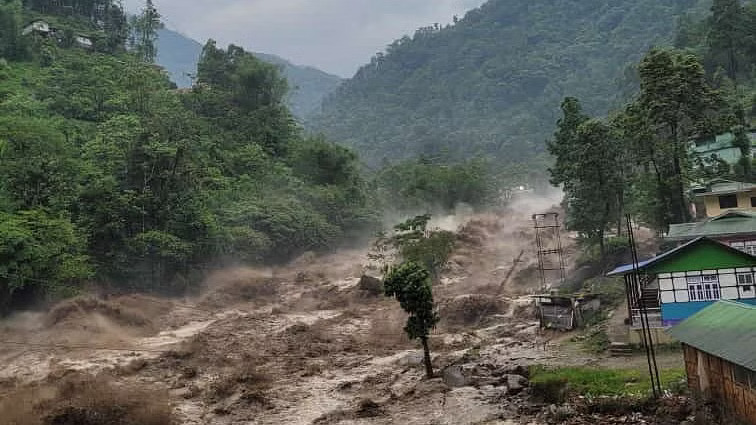Flash Floods in Sikkim

On October 4, 2023, a flood occurred in the Glacial Lhonak Lake in the Mangan district of Sikkim due to heavy rainfall. This led to a rise in water levels in the Teesta River Basin and caused flash floods in more than four districts, including Gangtok and Mangan. Flash floods happen when the water level rises rapidly in less than six hours after heavy rainfall, storms or cloudbursts.
The flood also caused the biggest hydropower project in Sikkim, the Chungthang Dam, to collapse and wash away. This further worsened the situation as all the water stored in the dam was released causing a further 15-20 feet rise in the water levels.
The flash floods have caused massive damage to roads, bridges, and residential buildings. Due to this, travelling has been affected. The tourists who travelled to Sikkim before the flood have been unable to return due to the current situation.
The Government of Sikkim has released circulars advising everyone to postpone travelling to the state under such weather conditions and declared all private and government schools to remain closed till October 15.
A total of 26 flood relief camps have been set up across the state to help the victims of the floods. Several Non-Government Organizations have been collecting donations, food items, and clothing and providing them to the victims of the affected areas. Many helpline numbers have been released by the Government as well as the Army for those in need. The helpline numbers are as follows:
- For Tourists: 7001911393, 8101426284
- Gangtok- 03592-24444
- Namchi- 03595-263734
- Mangan- 03592-234538
- Pakyong- 03592-291936
- Soreng- 8016747244
- Gyalshing- 03595-250888
- Kalimpong- 9147889088
- Darjeeling- 03542255749
While it is true that the damage caused by floods cannot be avoided, there are a few safety measures that you can take. Given below are a few things you should keep in mind if you are in an area affected by floods.
DOs:
- Move to higher ground
- Make sure you have stored enough food and drinking water
- Stay aware of gas leaks
- Use a stick to check the water depth
- Eat only freshly cooked food or dry food
DON’Ts:
- Do not go near streams, drainage channels and river beds.
- Disconnect electrical appliances
- Do not leave your shelter until it is safe to do so
- So not enter the water without checking its depth
- Do not walk in moving water as it can make you lose your balance

